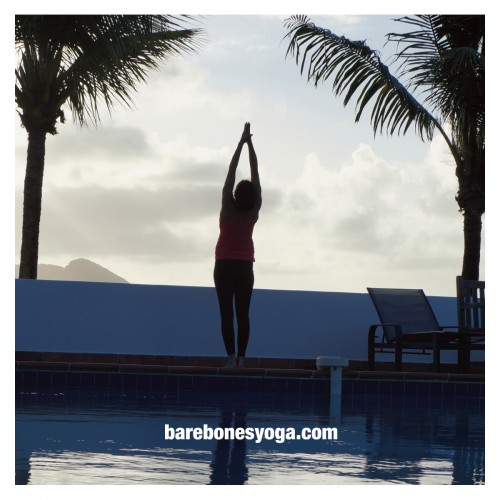
Over the past year or so, I’ve become more fond of coming up with a physical theme for the classes I teach. Sometimes the physical theme will also touch on a spiritual theme or something more about the mind/body connection but many times, it’s purely physical and anatomically based.
Today’s theme and the theme for most of my classes this week is “Axial Extension.” I didn’t select this with my book in mind, but it is rather funny that I picked a theme that is exactly what my book is called: “Stretched.” Now, I didn’t tell my class tonight that the theme is “stretching” but stretching and axial extension are the same thing.
The term “Axial Extension” refers to creating length in the spine, along the “axis of the body,” or the spine. Makes sense, right? In order to do that, we need to engage both the appropriate muscles in the back but also the muscles in the core that help us create length. In the back of the body, the muscle group called the “erector spinae” (erect spine) are responsible for creating that action of spinal length. In the front of the body, the “rectus abdominus” is the muscle in the core that creates length in the front of the body. This is an interesting dynamic because it essentially means we can’t have length in the back of the body without support in the front.
You can think of the action of axial extension when you come into a pose like Tree Pose or Warrior 3 or even Plank. When it’s upside down, you see it in poses like Headstand and Handstand. It’s helpful to create this length without collapsing into the lower back and this often happens when people have tight hip flexors. So, this kind of physical theme goes well with working a lot of hip extension to relieve the pull of the muscle called the “Psoas” on the pelvis, thus drawing it into a pelvic tilt.
The other aspect to this theme is that it can be very empowering for people to work length in the spine while supporting it with their core. There have been lots of studies and information recently released about how the shape of the body can affect how we feel. If you’ve never seen Harvard faculty and Social Psychologist, Amy Cuddy’s amazing Ted Talk on the subject of how we shape our body can change how we feel, watch this:
http://www.ted.com/talks/amy_cuddy_your_body_language_shapes_who_you_are
This speaks to more that just creating length in the spine; it also takes into account the shape of the body. When we start to talk about “shape,” we’re talking about “fascia,” that connective tissue “web,” like a Spiderman suit, that covers all our muscles and organs and in essentially a “container” for our body. It’s shape and stretching IT, even apart from our muscles (which are deeper) is an important part of creating length. If you’re interested in reading more about the properties of fascia, read this:
http://www.the-scientist.com/?articles.view/articleNo/35301/title/The-Science-of-Stretch/
Basically, if you want to feel powerful and empowered, creating length and connecting to your spine is a great way to do it.
